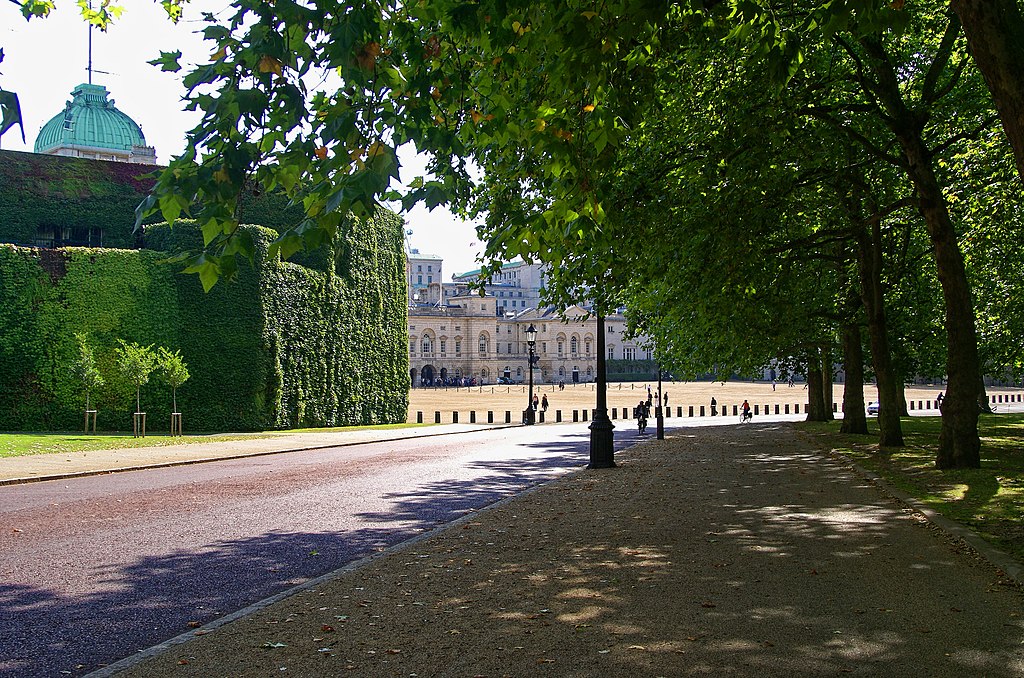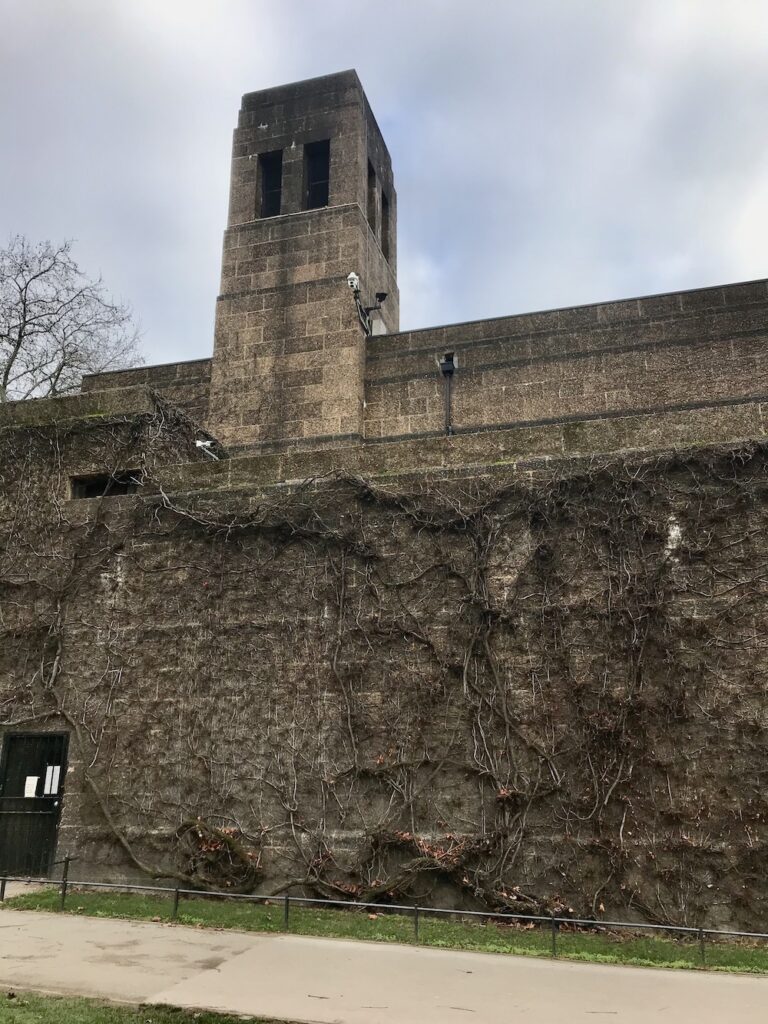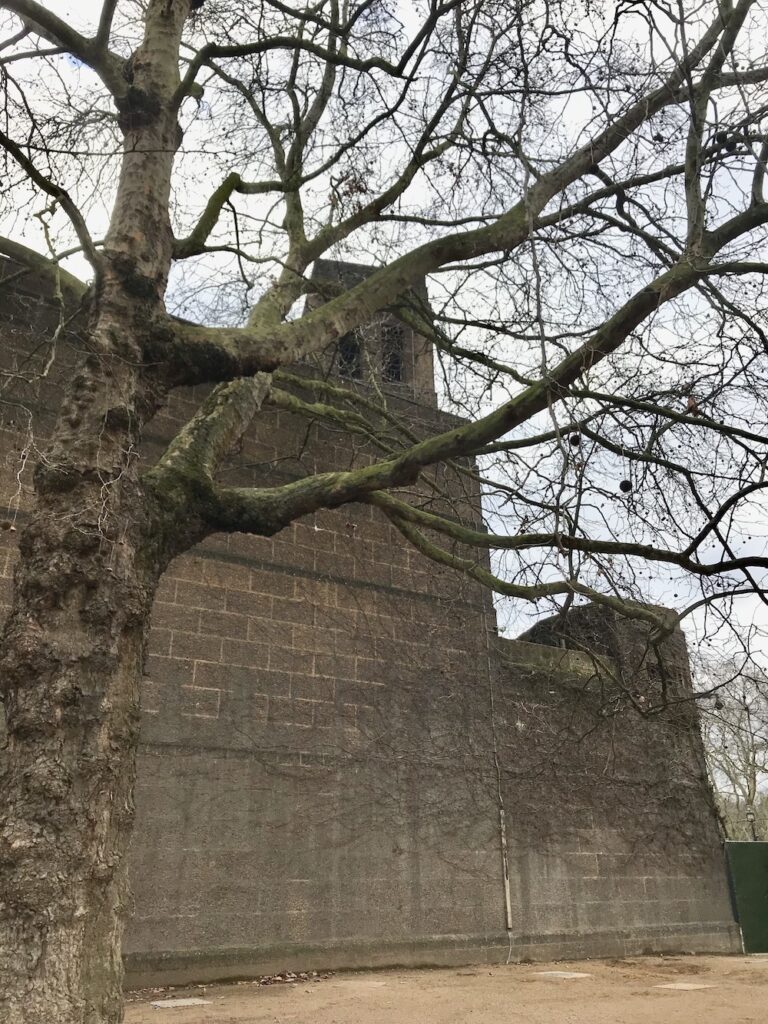
Squatting next to the elegant Queen Anne revival of the Old Admiralty Building (and more on that at some point) on the north side of Horseguards Parade is the proto-brutalist bulk of The Citadel.
This is another relic of London’s WW2 history, the secure communications and operations centre for the Royal Navy, built in 1940/41 to withstand aerial attack. Look closely and you will see gun loops to also protect against ground assault; the Citadel would have been the last redoubt if German tanks ever had rolled down The Mall.
Form definitely follows functions here. The foundations are 30ft deep, a 20ft concrete roof (planted with lawn* to obscure it from reconnaissance ‘planes) and 8ft thick walls house 156 rooms, which were staffed 24/7 by 700 people during the war and beyond. Their role was to direct the operations of the Fleet – “any ship on the high seas of the world can be contacted” according to this ‘Now It Can be Told’ piece from 1945.
Post-war, aesthetics rather than practicality or security came more to the fore. “A vast monstrosity” Churchill called it, and it was described as “the ugliest building in London” in a House of Commons debate in 1955.

The problem with a massive bomb proof building with incredibly thick concrete walls and roof is, of course, that it’s rather difficult, and pretty expensive, to demolish. Plus the fact that the building was still in use (in fact, between 1992 and 1998 the Citadel was a ‘stone frigate’ HMS St Vincent) so various proposals were made to disguise the place – cladding the structure in Portland stone, decorating it with statues of naval heroes, or even transforming it into a ‘hanging gardens of London’. None of these came about, although the massive vine that grows on the outside of the building (at this time of the year – autumn – a wonderful deep red) is a one of the sights of the capital. (The vine is apparently the responsibility of the Royal Parks, the building of the Ministry of Defence.)
The War Rooms – a couple of hundred metres along the edge of St James’s Park – are often described as ‘Churchill’s Bunker’, but in reality they were offices in a fortified basement. It is The Citadel that is the true wartime bunker in Westminster.
*grass which still needs to be mown “Access is possible only from the second floor of the Admiralty. This means that, twice a year, a lawn mower is pulled along the corridors, through an office and out of the window. In the evening, the process is reversed and I well remember the trail of grass across my office floor.” More here


